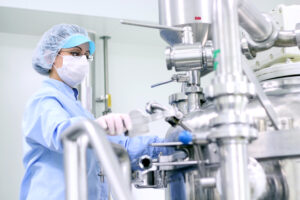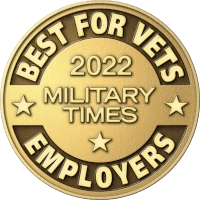
By David Mierau PE, Managing Principal,
As published in Pharmaceutical Processing World
It’s no secret the pharmaceutical industry has been slow to adopt sustainability practices. Unlike other industries, end users haven’t demanded products be made “greener.” In manufacturing, sustainability is still considered a cost rather than an investment. New technologies and innovative solutions may promise to deliver results, but many take years to show any return.
In pharmaceutical processing there’s pressure to deliver a consistent stream of top quality products at lower cost, while meeting regulatory compliance and keeping productivity high. Not to mention the challenges around retaining talent, supply chain issues, and keeping up with the latest technological advancements. Now, more companies are starting to pursue digitization as the answer to their problems and investors are demanding stricter ESG practices. Many leading pharma companies have already made ambitious carbon neutrality and net-zero pledges. Improving operational efficiency AND environmental performance are no longer mutually exclusive…but figuring out the most direct path to success is still the biggest challenge.
As a manufacturer, better operational efficiency is likely your top priority, or a very close second to improving quality. Digitization, data analytics, the latest equipment and technologies may help you run better, faster, cheaper, and safer but if you’re not planning for how your people will approach new ways of working, you’ll never reach your goals. It’s time to consider the whole picture of your company’s operations. This will not only help achieve cost reduction, but create the right opportunities to implement sustainability initiatives.
A smarter approach to sustainability
Your operations should consider all of your assets – the technologies you deploy, the work processes you follow, and your people. It’s what we call a smart culture. People are at the core of what you do, and they can make or break any significant changes you are trying to implement in your business. You may have operators that have been working the same way for decades, and now you’re informing them they have to change how they do things. How will you support their transition and ensure your employees remain engaged? Maybe you have older workers set to retire– how do you ensure you capture their knowledge for the next generation? Education and training are at the core of employee engagement and can set the stage for the cultural change that must occur.
How do you implement a smart culture? Here are some steps you can start to consider to help get you to your goals:
- Begin with the end in mind. This is where goal deployment comes into play. Setting a roadmap of what your future state looks like is key to success. If your goal is to reduce your energy consumption, start with measuring and capturing your baseline. This early stage can often be the most challenging and time-consuming. Understand which assets consume the most energy and prioritize improvement opportunities to enable quick wins early in the change initiative.
- Adopt best practices for better asset management reliability. Your plant may have several large sites with hundreds of pieces of equipment, all operating at different times. Address your fundamental business processes such as ensuring alignment with your physical assets and organizational strategy. Manufacturers and facility operators often struggle to cost-effectively maintain safe and reliable operations for their critical assets. A huge portion of manufacturing operational costs are incurred by the energy required to run equipment. While your assets may be critical to the running of your operation, they’re often using more energy than needed. This is one of the key reduction areas contract manufacturers can focus on. With better asset management, you can lower energy usage, increase efficiency, and drive productivity.
- Ensure your technology is helping you achieve your goals. This can also help offer clear, actionable insights. Focus on investing in the technology that can add value to your processes, like condition monitoring. When successfully implemented, these systems can operate across hundreds of different equipment manufacturers. You can achieve reliability and sustainability improvements simultaneously when the right technology is applied.
Digitization ups productivity, safety and sustainability
With machine sensors capturing and analyzing hundreds of data points every minute, we can have all the information we need to identify impending failures. But many manufacturers are failing to achieve their goals of improved asset reliability and reduced costs due to lack of management around data collection, data analysis, and reporting. Data quality related to asset management is critical. Bad data can lead to increased costs, poor decision-making and even revenue loss.
Investing in agnostic software systems that can operate across hundreds of various equipment manufacturers allows for greater access to preventative and predictive maintenance solutions. This can help make data-driven decisions and improve quality, productivity and profitability. KPI tracking for reliability improvements can also include sustainability KPIs such as energy use reduction – typically more reliable operations use less energy to achieve equivalent or higher output. These programs can lead to reduced energy consumption by ensuring the overall plant is operating at optimal efficiency – optimizing resources and reducing issues around bottlenecks in processes and temperature inaccuracies.
Establishing the right process is critical
For pharma manufacturing, digitalization is a huge potential advancement, particularly with asset performance management leveraging artificial intelligence and machine learning. These platforms are not a magic wand – they take effort, knowledge, support and high levels of data quality to be successful. New skill sets are needed for the teams implementing digitization. Many pharma companies are creating digital teams that are a combination of data scientists and process experts. Some companies are even bringing in third party service providers to help analyze the vast amounts of technical information, understand fault codes and identify issues.
No matter your approach, all pharma companies should develop a digital strategy and include Industry 4.0 technologies, but they need to understand where to best apply them. Remember, just because you can apply digital technology, doesn’t mean you should. Determining critical assets and the types of digital tech to apply are key steps in starting a digital journey along with strong foundational data quality. This could include developing standard operating procedures for ensuring and managing data quality or identifying individuals who are properly trained and certified to analyze the data. The most important part of this step is effective communication – a change management-first approach will help ensure you harness the full potential of a smart culture.
The success of smart culture relies on effective change management
The availability of skilled workers is predicted to be an ongoing challenge and although Industry 4.0 technologies will help solve some of the problems, the fundamental issue of fewer workers entering the industry than leaving, will remain. If you want to meet the demands of a more technologically-driven workplace, and do so with fewer people, you’ll need new ways of working. This will require organizational engagement, new procedures, and educating workers in best practices. Getting the right people in place may seem like your biggest challenge, but they can also be your best opportunity.
Just as engaged employees can make or break an organization’s success, effective leadership and communication are critical too. Once you accomplish this, the promise of a smart culture can become a reality. And the results it brings – optimized manufacturing and improved sustainability – can open the door to value-focused digitization implementations.
David Mierau, PE, Managing Principal, Life Cycle Engineering, works with global life sciences organizations to build world-class manufacturing operations through optimized asset management programs, and implement digitization with Industry 4.0 initiatives. Prior to LCE, David worked in pharmaceutical and biotech manufacturing as well as facilities/utilities equipment design.















